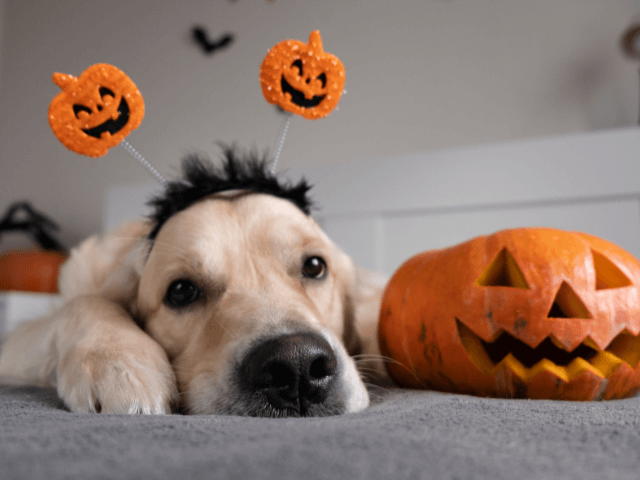
Halloween is one of the most exciting nights of the year for families, but it can also be one of the most stressful—and dangerous—for pets. As a veterinarian, I often see many preventable emergencies around this holiday, from pets who have eaten toxic treats to those injured after bolting out the door. With a little preparation, you can keep your furry family members safe while still enjoying the fun of the season.
Holiday Foods: What’s Safe and What’s Not
The number one risk for pets on Halloween is food. Chocolate in any form is toxic to dogs and cats, and sugar-free candies made with xylitol can cause a life-threatening drop in blood sugar and even liver failure. Grapes and raisins are also extremely dangerous, leading to kidney damage in dogs. Even candy wrappers—foil, cellophane, or plastic—can cause choking or intestinal blockages if swallowed.
If you’d like to give your pet a seasonal treat, keep it simple. Plain cooked pumpkin or sweet potato, carrot sticks, or a small slice of apple (with seeds and core removed) are safe options in moderation. Some owners prepare special frozen “pet pops” made with pumpkin or xylitol-free peanut butter for a festive and healthy snack.
Decorations and Costumes
Halloween decorations create hazards that many pet owners overlook. Jack-o’-lanterns with candles can easily be tipped over, causing burns or fires. Electrical cords powering spooky displays may be tempting to chew, and small decorations can be swallowed. Costumes, while fun, should never restrict your pet’s ability to move, breathe, or see clearly. Always supervise your pet if they’re wearing one, and remove it if they show signs of stress.
Fear, Anxiety, and the Doorbell
Perhaps the most stressful part of Halloween for pets is the parade of visitors at the door. The repeated ringing of the doorbell and the sight of costumed children can cause fear and anxiety. Dogs may bark or lunge at the door, and cats may hide or, worse, slip outside.
To reduce stress, I recommend creating a quiet space in your home away from the commotion. Provide your pet with familiar bedding, toys, and perhaps a white noise machine or calming music. For dogs that are especially anxious, practicing with the doorbell sound ahead of time—rewarding calm behavior—can help. In some cases, pheromone diffusers or calming supplements may be appropriate; consult your veterinarian if your pet experiences significant stress.
Final Thoughts
Halloween can be fun for pets, but only if their safety and comfort come first. Keep human treats out of reach, offer safe alternatives, monitor decorations, and create a calm retreat during trick- or-treating hours. A little planning goes a long way toward ensuring the holiday ends with happy memories rather than an emergency visit to the veterinary clinic
